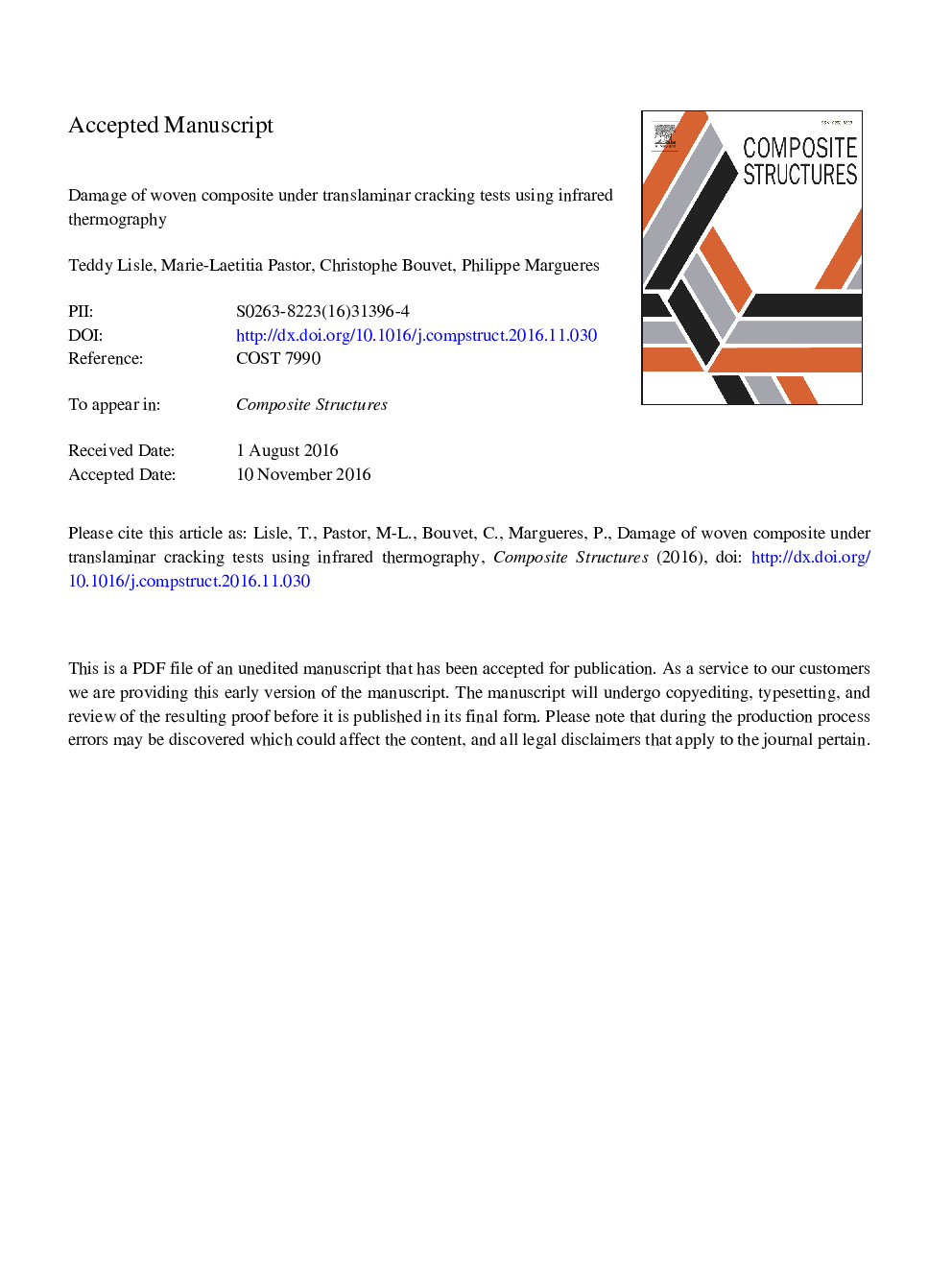| Article ID | Journal | Published Year | Pages | File Type |
|---|---|---|---|---|
| 4917853 | Composite Structures | 2017 | 22 Pages |
Abstract
The aim of this work is to increase the study of the notch translaminar propagation of the woven structures, using the infrared thermography (IRT). A test of notch propagation under quasi-static traction was developed and used to study the failure phenomena on two different draping sequences. For each study, a local estimation of dissipated energies, associated with different damages, is carried out using the measurement of the surface temperature field. The study of heat source fields combined with micrographic observations allowed to define the matrix micro-cracking as the predominant damage phenomenon in crack tip. The critical energy release rate, obtained using IRT, corresponds to critical energy release rate reported in the literature for translaminar rupture of laminates. Furthermore, when brittle cracking develops in a thermosetting matrix laminate, the majority of irreversible mechanical energy (>90%) is dissipated as heat. In the case of brittle cracking, the developed method proves to be an efficient alternative technique for the local measure of energy release rate, even in cases where the variations in stiffness due to cracking phenomena remain low.
Related Topics
Physical Sciences and Engineering
Engineering
Civil and Structural Engineering
Authors
Teddy Lisle, Marie-Laetitia Pastor, Christophe Bouvet, Philippe Margueres,
